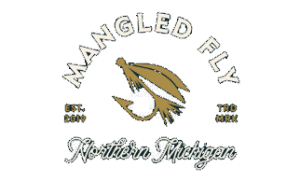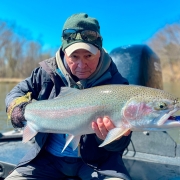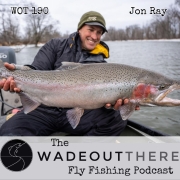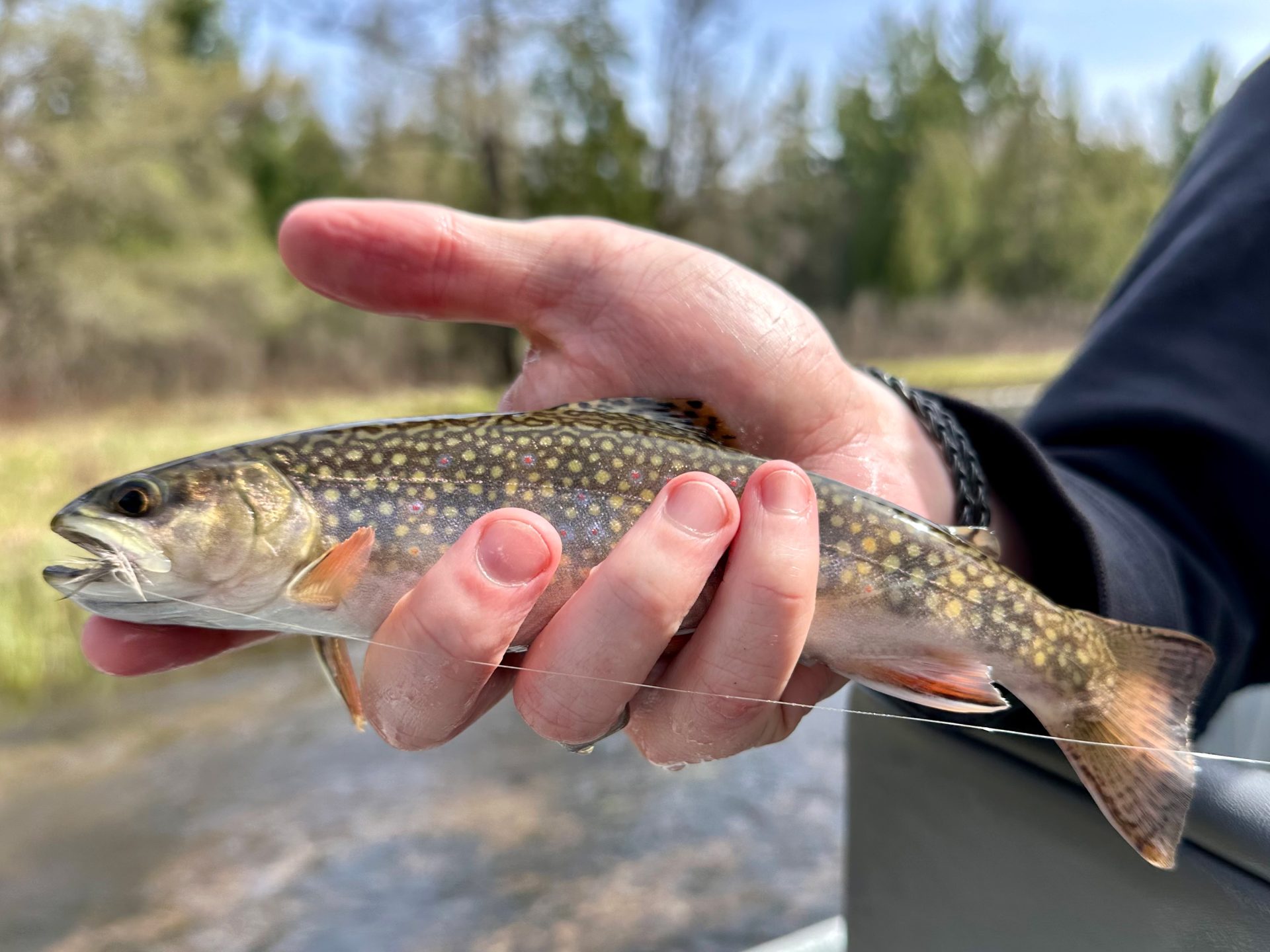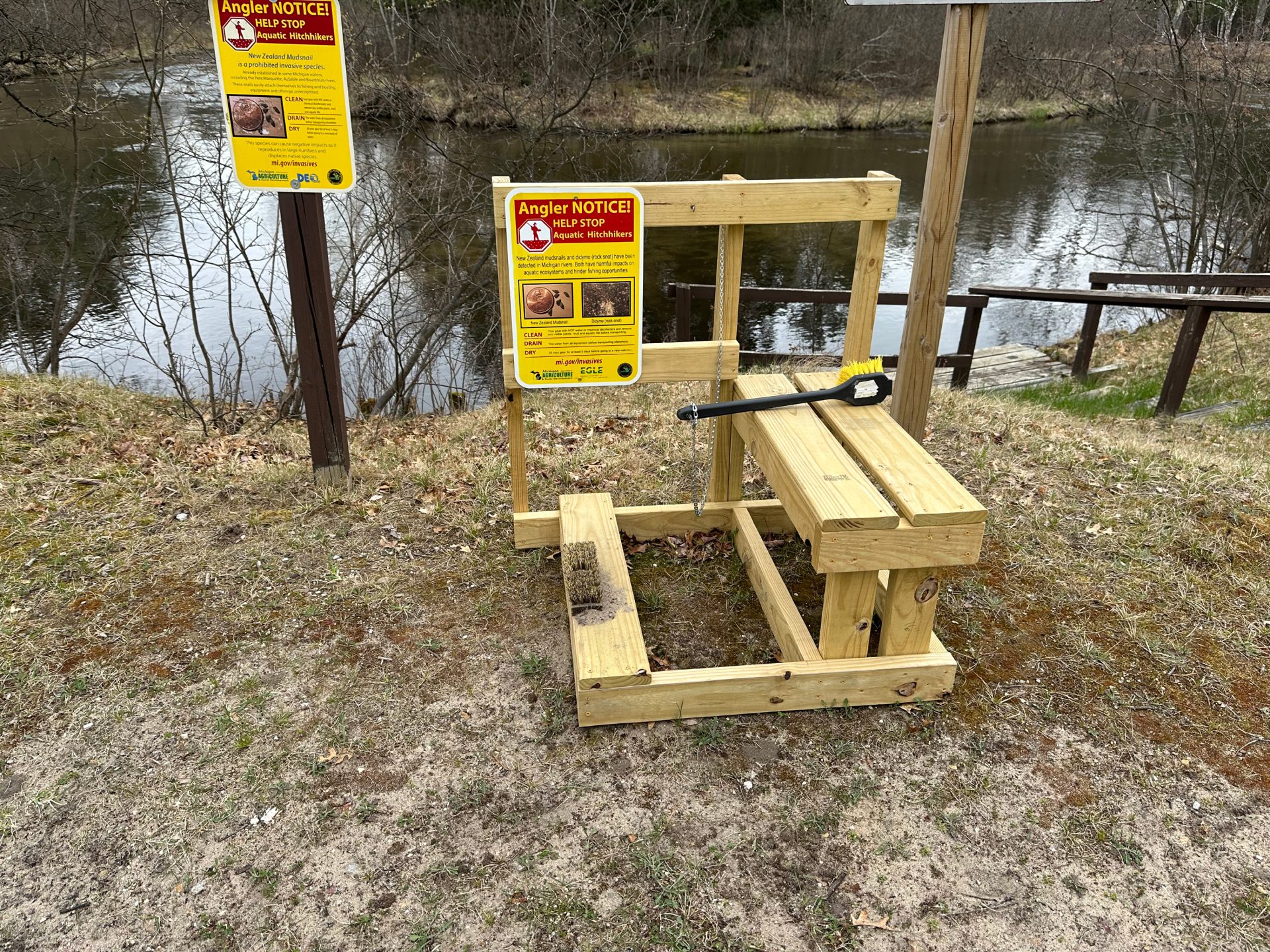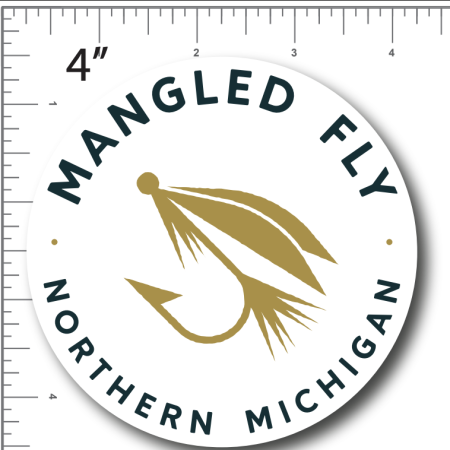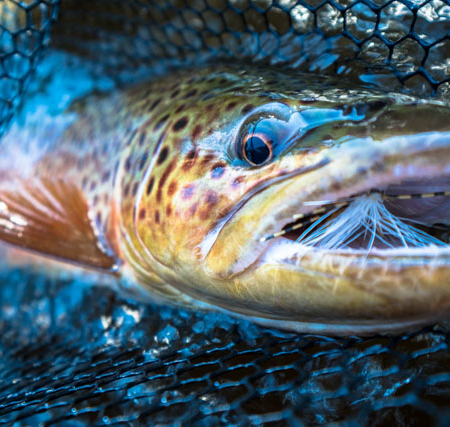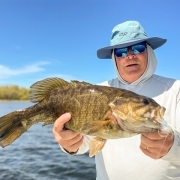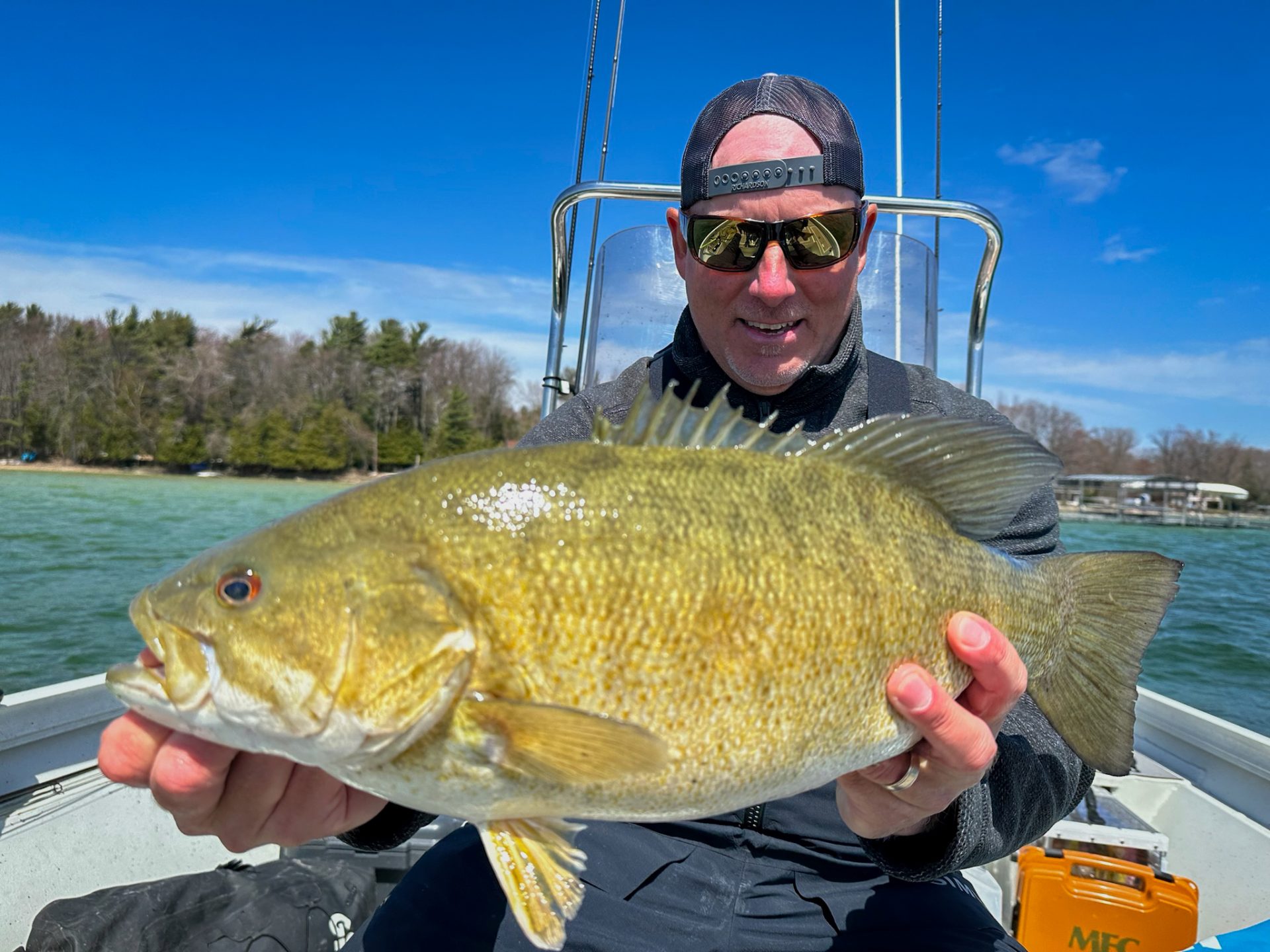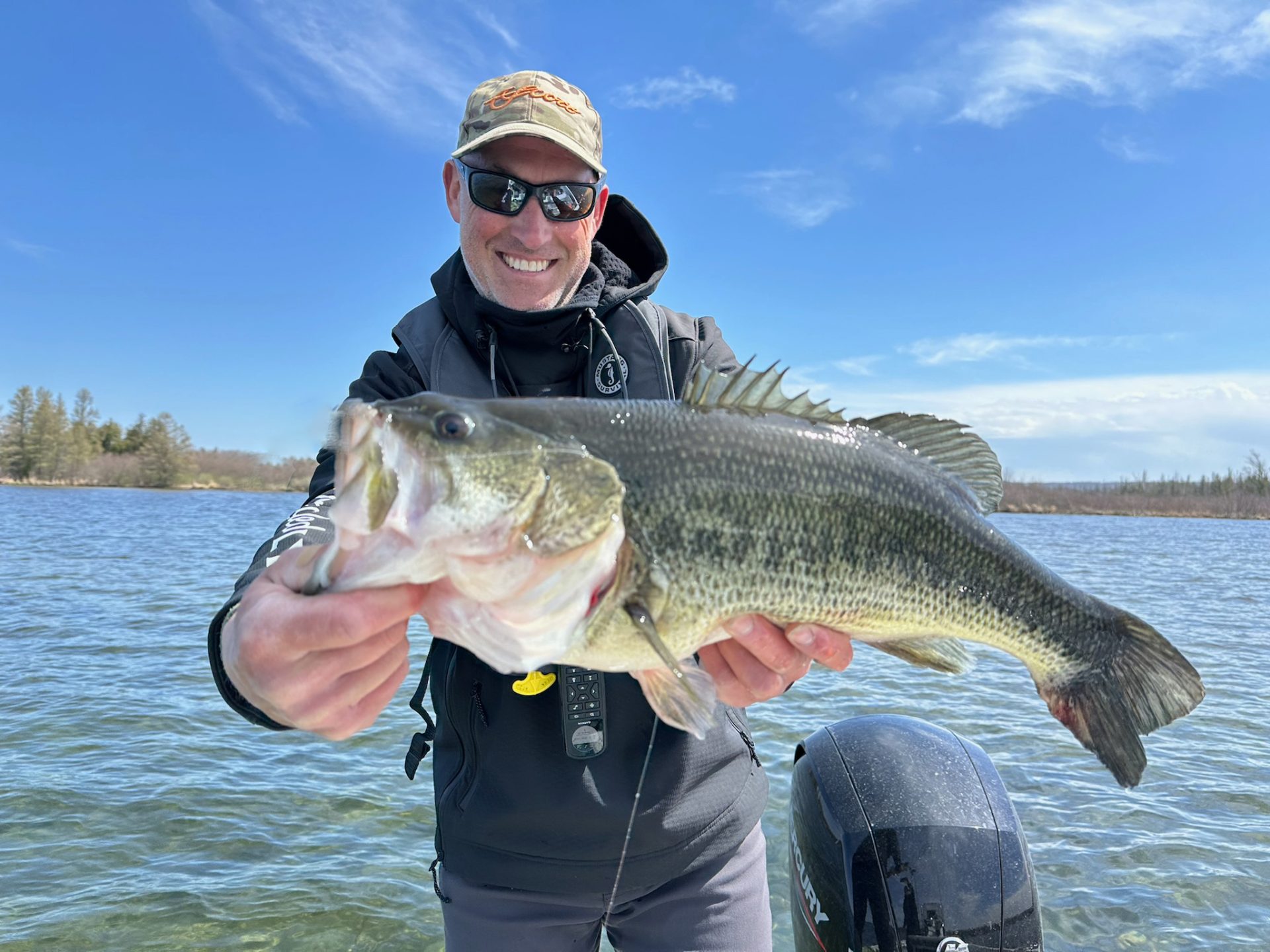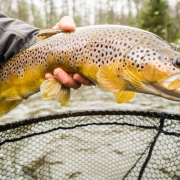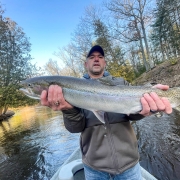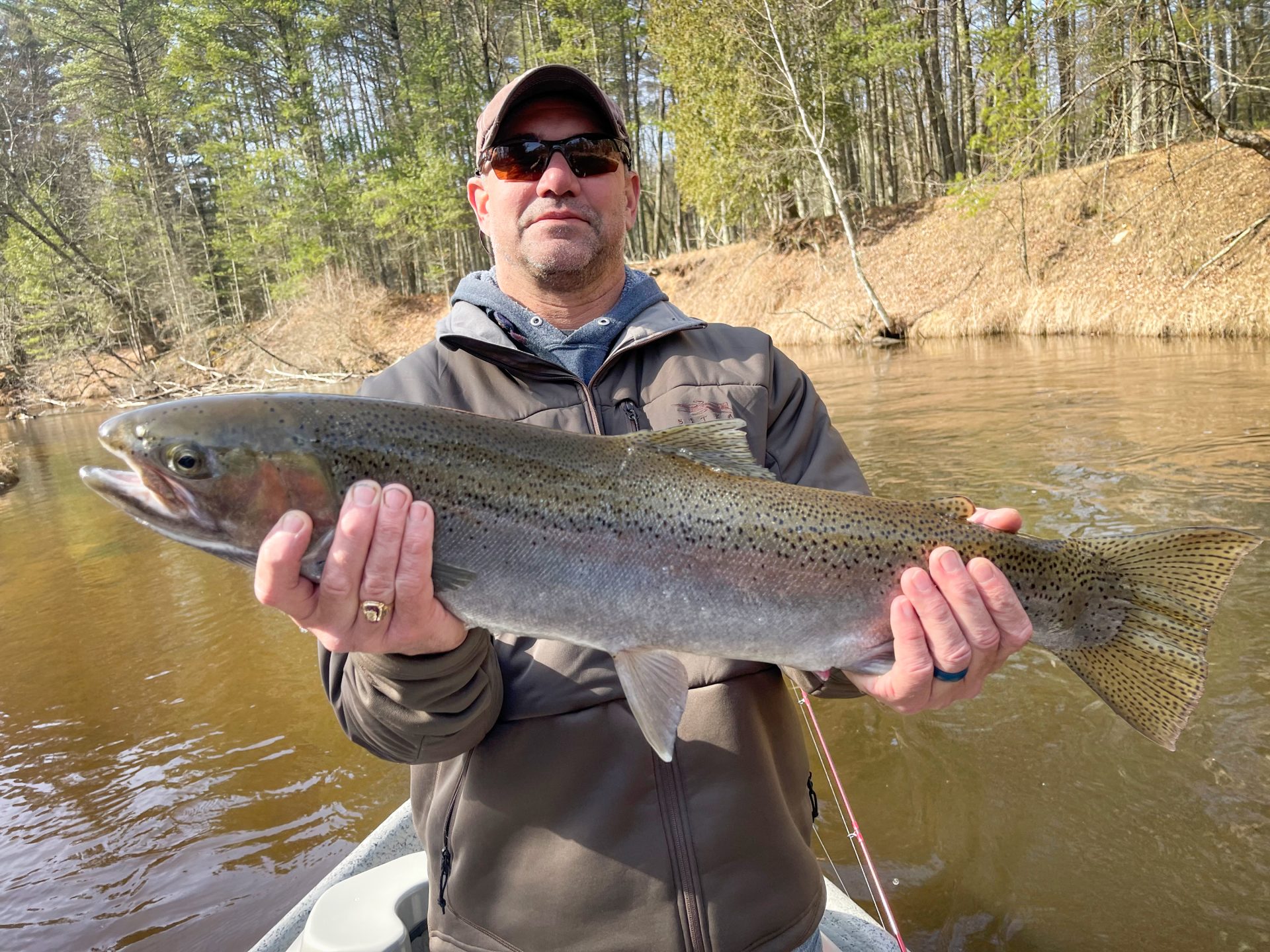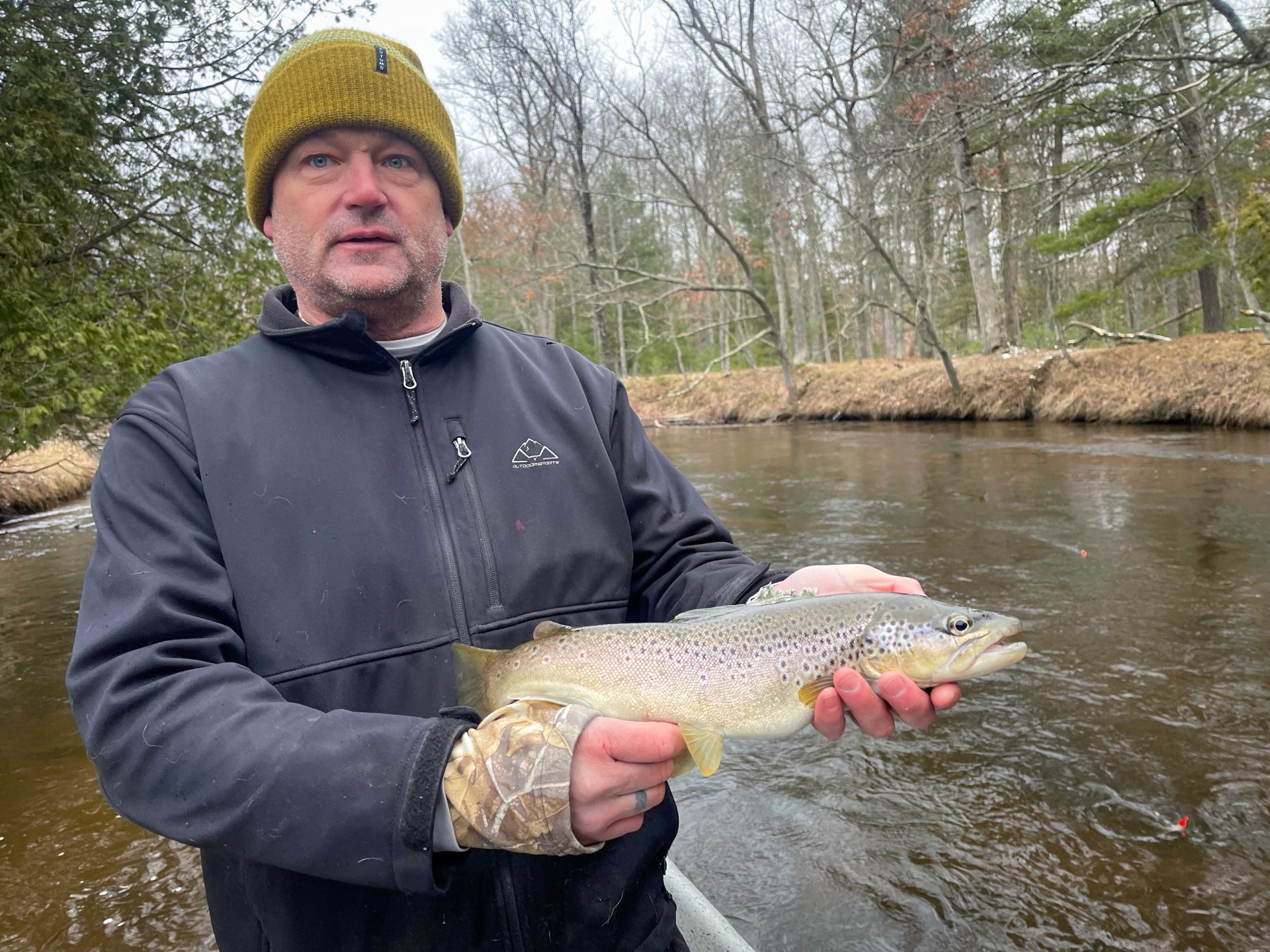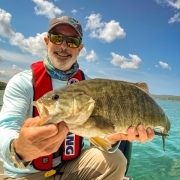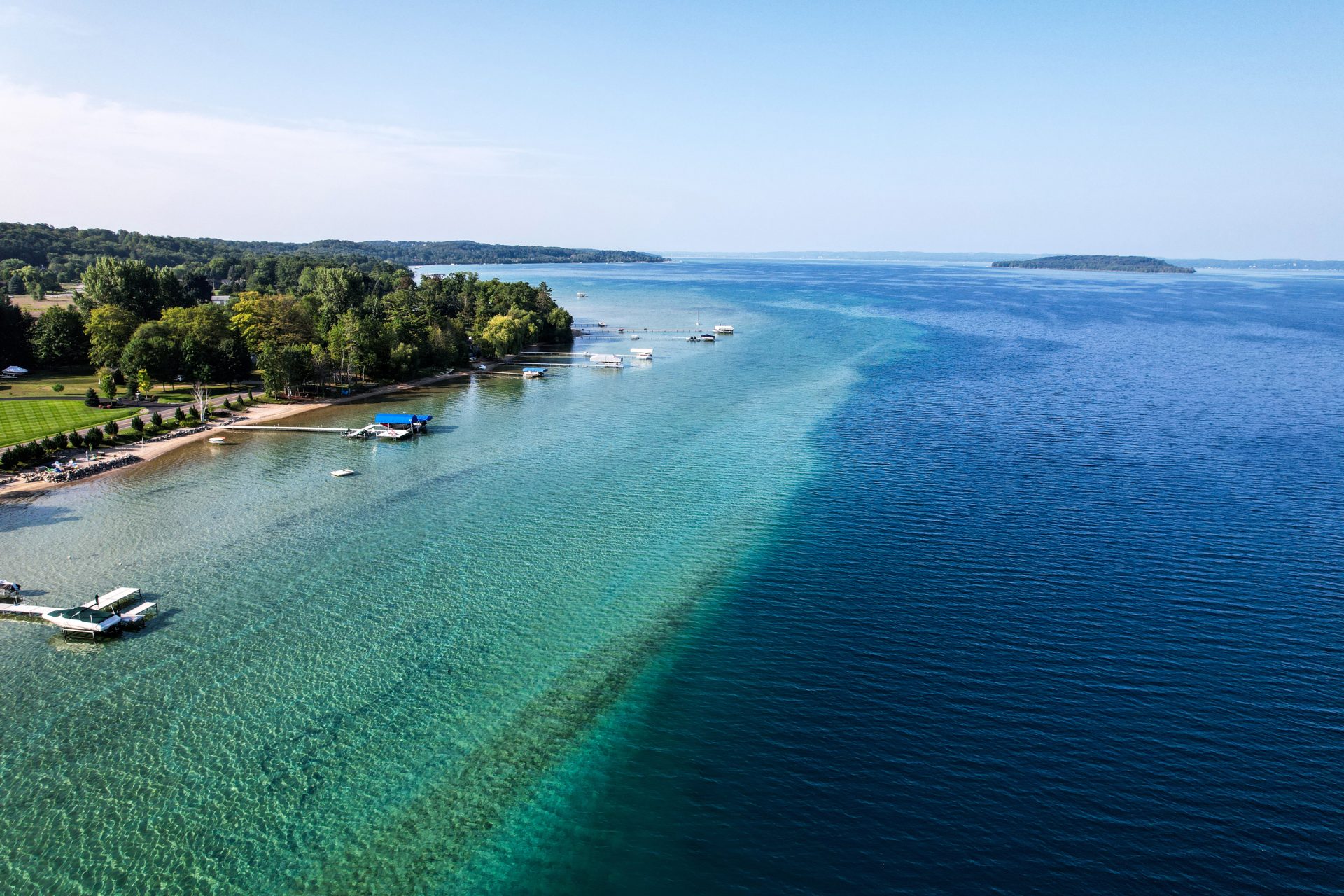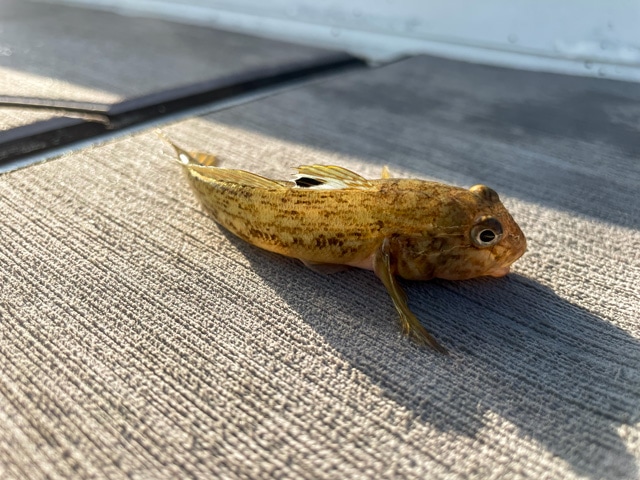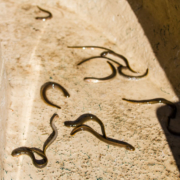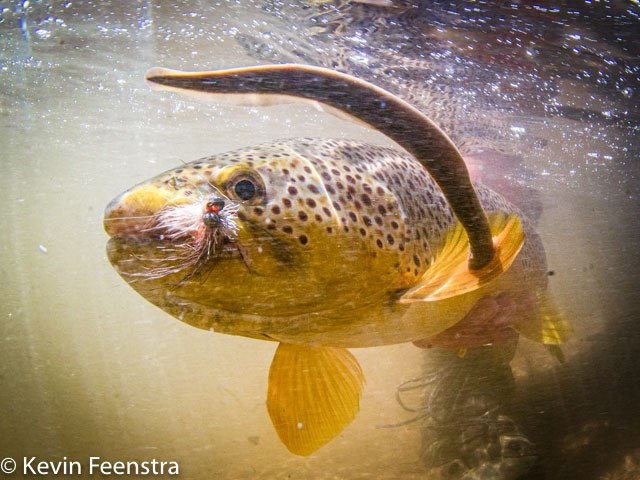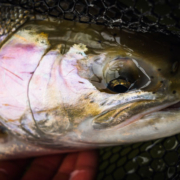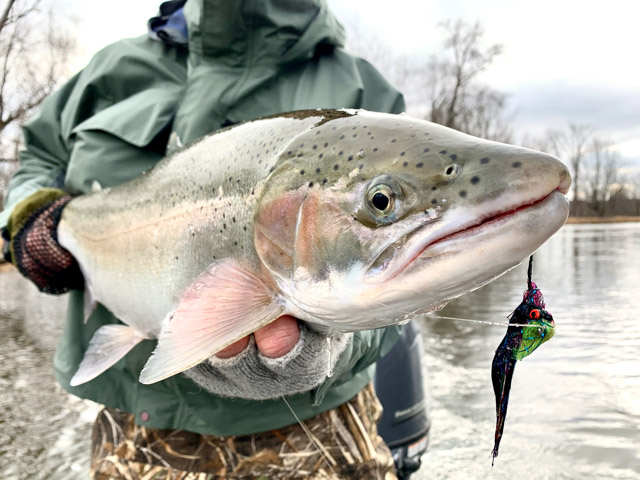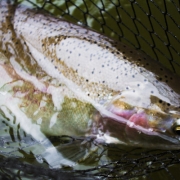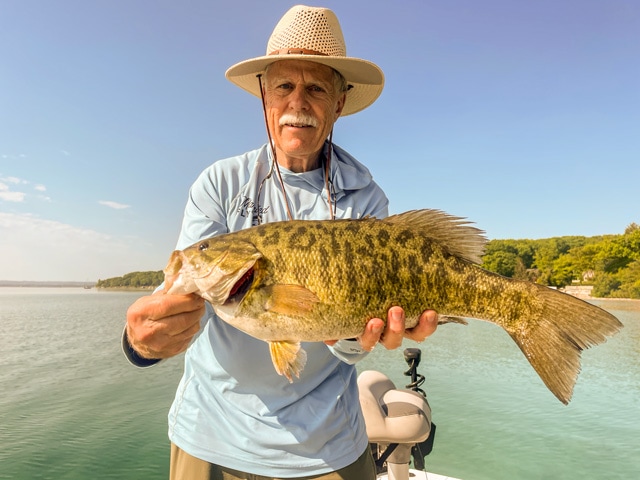Manistee River Steelhead Report below Tippy Dam
Manistee River

Trout/Bass fishing Below Tippy Dam
The Manistee River fishing report below Tippy Dam for the early part of May has us switching gears and targeting Trout and Smallmouth Bass. The trout have been actively pursuing small streamers and Black Caddis. The Smallmouth Bass pre-spawn run continues to offer anglers a fly/lure friendly day on the water. May is always a fun and exciting month of fishing in Northern Michigan. With the Michigan Trout Opener on the Upper Manistee and the Grand Traverse Bay Smallmouth fishing firing up, we find ourselves with a new focus and some warmer weather.
Trout
Currently the Manistee River below Tippy Dam Water Levels are up a bit as some recent rains have blessed us with another water bump. Flows on the Manistee River are currently 2050 cfs with water temps hovering around 57. Trout are beginning to chase small streamers and take advantage of the abundant Black Caddis hatches that have started to pick up this week. Swinging soft hackles this time of year and fishing small salmon parr imitations can be a fun way to spend the day. The “Big Man” can offer an enjoyable experience for anglers of all skill levels, but its broad expanse offers a great setting for both beginning and intermediate anglers alike to dial in their casting and angling skills.
Smallmouth Bass and Pike
Jon and I have both noted how we have switched programs to the Smallmouth Bass earlier this year than during previous seasons. Jon has been busy exploring the river and many Inland Lakes for a couple weeks now and I have joined in on the fun when I could. The conditions the last few weeks have been perfect for Smallmouth Bass entering their pre-spawn phase. The pre-spawn Bass are pretty receptive to throwing some of the largest swim flies of the season and can offer some epic visual eats. So far the overall size of the fish and numbers in general have been very good.
Northern Pike have been showing up more in our catch this week as well with the warming water temps. Typically this time of year we like to run fine wire on our Swimbaits so we can fish any water type without prejudice. The tax man is always lurking and if you don’t want to lose your favorite fly or lure wire up and fish without fear. This time of year Smallmouth Bass are a great option for catching fish when we are facing tougher conditions on the trout streams impacting the bite. Of course this can work both ways, so I went into more detail on how we adjust in this latest blog post.
Salmon Fry
The river is currently loaded with Salmon Fry. We are seeing small bait balls just about everywhere in the slower edges of the river. This is a great way to introduce someone to streamer fishing for trout or bass. Fishing small streamer patterns on light sink tips is a fun way to dial in some critical angling skills. Brown trout, Smallmouth Bass, Pike, and drop-back Steelhead are all utilizing this food resource. Now is a great time of the year to get out learn, practice, and enjoy the water as the warmer weather adds a green landscape over the next week or so.
Booking a Trip
Manistee River below Tippy Dam is one of the best west side rivers in the state of Michigan. Mangled Fly guides are starting to fill up their Summer Opening’s so give us a call soon to join in the fun at (231-631-5701) you can also shoot us an email. Also it’s not too early to get your Fall Steelhead trips on the books.
We have a new sticker available in the shop, this sticker is pretty cool so make sure to get yours today. We also have some new additions to the shop this year. Hand tied Night Leaders for those of you that like mousing for brown trout. We also put together a Night Fishing Assortment that saves you a few $$’s and comes with an easy box to store them in.
Ed
